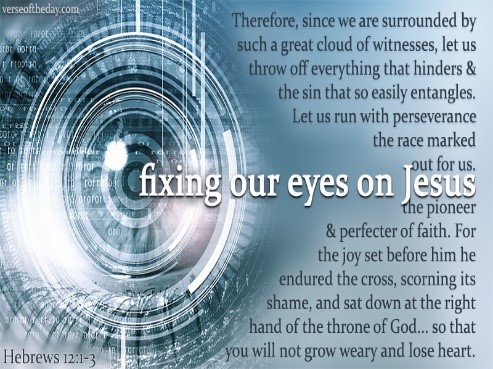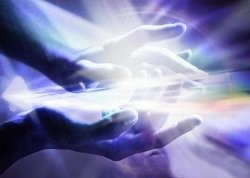
Vol. 4, No. 18 – May 5, 2019
And He who was sitting was like a jasper stone and a sardius in appearance; and there was a rainbow around the throne, like an emerald in appearance. And around the throne were twenty-four thrones; and upon the thrones I saw twenty-four elders sitting clothed in white garments, and golden crowns on their heads –Revelation 4:3-4
Seven Things John Sees in Heaven
1 – The Trinity (4:2-3)
At the time of the Church, things are different. Every believer is indwelt by the Holy Spirit, every believer is in union with Christ, every believer is called to be in “full-time” ministry, every believer is of the priesthood, and every believer is an ambassador of Christ. Here, again, we find a descriptive that includes the Trinity – the rich stones depict the character of the godhead. John sees the divine characteristics of the Trinity: love, justice and righteousness, sovereignty, eternality, power (omnipotence), presence (omnipresence), and knowledge (omniscience). John visits these characteristics repeatedly—watch for it. The Trinity is an absolute truth that many “religionists and philosophers” (along with many world religions/philosophies) choose to deny. Denial of a truth does not change its truthfulness.
2 – Twenty-four Elders (4:4)
Twenty-four elders (presbyteros, ancients); we get our word Presbyterian from this word. Elders reflect different images in the Scriptures: leadership and rank (but never age); angelic beings; earthly beings; in the context of Acts 20:17, 28; as a term referring to earthly person charged as an episcopos/overseer of the flock; in Ephesians 4:11 as the pastors/teachers, but not specifically laity. How does your church’s use of the term align with Scripture? There are significant differing uses of elders in many churches.
Notice their appearance. They are sitting, as if in a fixed position. They are clothed in white raiment, indicating they qualify to as an elder. They are crowned in gold, a sign of victory, and a sign of proven ministry; ministry has purpose, and the ministry is expected to be faithful (Romans 8:37; 1 Peter 1:4-5).
3 – Signs of Judgment (4:5)
John depicts what he sees in symbols that are awesome, powerful, both in sight and in sound. It is a profound scene, pushing the ability to comprehend or understand; we get it in pictures. Pictures can be instructive, helping us to understand the artist’s mind and heart. However, we have to be careful with pictures. We can let our minds be clouded, keeping the deep reality of what the artist intends to represent distant. Judgment comes after God’s testimony (4:3). God’s judgments are always perfect, because judgment is based in God’s character (Zechariah 3:9; 4:10; Revelation 4:5; 1 Peter 3:12). The Seven Lamps are a picture of the Spirit of God, blazing with divine vengeance; present, not far off.
4 – The Church at Rest (4:6)
A sea of glass is a picture of the Church in Heaven in a sea of calm (while the earth is unstable; Isaiah 57:20). The earth is unstable as it reels within itself with the changing winds, storms, and rains upon the people. The earth is more profoundly an unstable, unpleasant, and dangerous place to live—especially for those not redeemed. For the believer, Heaven is always stable and calm (tranquil) as if on a glassy sea.
5 – Four Living Creatures (4:6-11)
Wow! Creatures! These are like creatures, used to represent something else . . . Christ. The lion (theria) is a wild animal, the king of the jungle, presenting Christ as King (Matthew and Revelation). Christ is out of the tribe of Judah. The calf/ox (zoa) is descriptive of the animal used for sacrifice, and as a servant (burden-bearer) to someone. The calf/ox are patient. Christ is the sacrificial servant. The next is the face of a man, resenting Christ as a son, the Son of the living God. Finally, the eagle, the powerful one that soars over all, that has powerful talons that reach deep into the life—the eagle presents Christ as deity.
6 – Three Books of Judgment (5:1-4)
In the 1960s, John Lennon (of the Beatles) said his band is more popular than Jesus Christ is. He penned songs like Imagine and Give Peace a Chance. He was looking for utopia, yet dismissed the very One who has peace and eternity in His hand. Humankind seems to like to substitute their own thinking, opinions, as a substitute for the absolute truths of God’s Word. Yet it always fails. Only those whose names are written in the Book of Life will enter into eternity to live with the Trinity.
7 – Christ as Judge (5:5-15)
John sees the One who is worthy. A statement of contemplation, even the question that comes to the heart of voters, when they go to the polls. Who is capable? Who has character? Who is competent? Some have considered themselves such a person. Think of Nebuchadnezzar, Alexander the Great, Julius Caesar, Adolf Hitler, and Saddam Hussein. Think of some self-focused U.S. Presidents and government officials, Mohammed and several religious leaders, and we could go on.
Yet, there is only One who is fit to judge – the Lord Jesus Christ; regardless of what men and women might say about themselves.
Opinions are like noses; everyone has one and they all smell!
How is your opinion doing today?
There is only One true leader we can depend upon—His name is Jesus!
Behold, Jesus is coming soon to take you home to Heaven; His words are faithful and true (Revelation 22:6).


